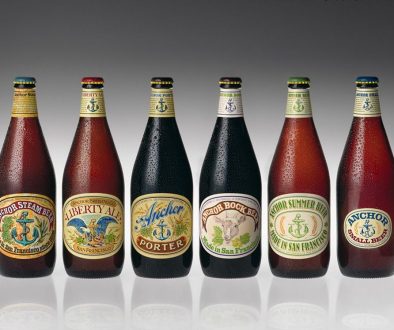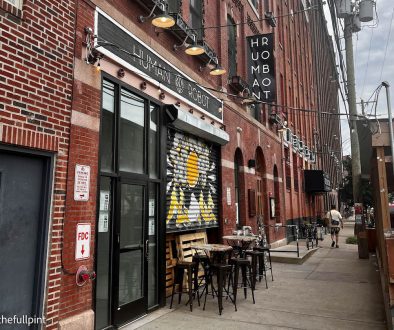2016 Craft Beer Year In Review Part 1
We are winding down 2016 here at The Full Pint. We may have said this in previous years, 2016 has felt like one of the most dynamic and evolutionary years for the craft beer scene in our 9+ years of covering it. While there has been a sense of brotherhood and camaraderie amongst the sector, the vibe I got this year was one of competitiveness, tension and a bit of uncertainty. Here are some interesting and important topics that encapsulate 2016’s year of craft beer. While I’m not meaning to throw shade, there are some events that took place this year that made me skeptical and or roll my eyes.
Big Beer continues to takeover – Even though AB-InBev is under stricter watch with regards to U.S. Antitrust laws, they continue on purchasing fairly small, regional craft breweries this year. The main goal is to blend into the highly popular trend of locally made, highly flavorful independently made beer. With the “if we can’t beat em, we might as well join em” mentality, AB-InBev has made a big push to infiltrate their newly acquired brands into the same shelves and tap towers as honest to goodness, Brewers Association defined craft beer. This has caused craft breweries to puff out their chest and fight back, with clever campaigns. It remains to be seen how this will end, but we’re pretty sure this war has only just begun.
Core brands die off – Market reports, observations at retailers and press releases from medium and large sized craft brewers are indicating that the days of the core brands are dying if they aren’t already dead. For a long time, breweries were able to afford making experimental, and in some cases expensive beers by selling flagship or core lineup beers. Typically a brewery would brew an IPA, a Stout, a Red and a Blonde year round, and those who like to stock their fridge with daily drinkers or pack a cooler for the beach would continuously buy these brands with loyalty. We saw New Belgium, Avery Brewing, Stone Brewing, Deschutes and to a lesser degree, Firestone Walker remix and in some cases ditch their stable for completely new beers, only placed in a seasonal situation rather than a year round one. Here in Los Angeles, many of these young breweries have been a victim of this trend and will be doing away with six packs and year round bombers.
Hazy IPA trend – We mentioned the beginning of this craze in our year end review last year. If you’ve been living under a rock, basically, after the rise in popularity of The Alchemist Brewery’s Heady Topper, a few younger breweries in the North East and New England began brewing turbid IPAs with great fanfare. Jokes have been made about these beers looking like egg drop soup and butterscotch pudding all year long, but the fact remains the same, the popularity of these beers are sky high. While brewers like Other Half, Trillium, TreeHouse, Bissel Brothers and Tired Hands are reaping great reward, many old school and classically trained brewers are shunning this as a big mistake that might lead to a big wave of low quality products on the market. Right now, many badass hoppy ale makers on the west coast are bending their ideals to produce this “lightning in a can”, and I don’t see an end to this in 2017. With brewers netting up to $20 a four pack, we don’t see why brewers would want this trend to ever go away.
Fruit beer trend – It wasn’t too long ago that fruit beers were kind of made fun of. The crux of the diss was that people that didn’t really like beer needed to mask the flavor with fruit. That stigma lead to beers like Pete’s Wicked Strawberry Blonde Ale and Sam Adam’s Cherry Wheat to fall into the abyss of shunned beers around 20 years ago. Fast forward to last year, and Grapefruit Sculpin made the trend of fruited beers popular. 2016 could be considered the year of the fruited IPA, it was just that prevalent. New Belgium made Citradelic Tangerine IPA, Stone riffed on their Enjoy By with an Enjoy By Tangerine. Green Flash saw success by putting Soul Style with Tangerine and Passionfruit Kicker at any endcap display they could. It feels like every brewery with a bottling or canning line tried to make at least one fruit beer this year with varying success. The interesting thing to watch is if this trend becomes a mainstay, and how many latecomers create one of these products once interest dies down. Here’s what you the readers thought of the trend [link]
Medium/Large Craft Expansions – Craft beer’s popularity started to hit mainstream popularity around 2012 and 2013, at levels unseen before. Medium sized brewers like New Belgium, Stone, Deschutes, Oskar Blues and Green Flash couldn’t keep up with demand, and saw the opportunity to make a run for Sierra Nevada and even Boston Beer’s market share. As the brewers mentioned began constructing their second, south east based destination brewhouses, the number of nano and small brewers began to rapidly increase. What seemed like a slam dunk in terms of supplying much more beer to meet growth and demand forecasts became a challenging and scary proposition. More options and consumers not showing brand loyalty has lead to a slowdown in demand for the mature brands we’ve come to know and love.
Lagers and dad beer – While IPA is the market leader, and younger drinkers gravitate towards experimental sour and strong ales, there is a nice trend in craft beer drinking that caters to the sensible and responsible drinker. Craft lagers and lager-like blonde ales have taken a foothold in the market. Those who are sick of pissing out Bud Light every twenty minutes, or those burned out on hops have been purchasing easy drinking, 5% abv light bodied beers made by craft brewers. Beers like Firestone Walker 805 Ale, 21st Amendment El Sully, Cigar City Tampa Style Lager have been popular sellers, and in Firestone Walker’s case, been one of their best sellers, outperforming some of their hoppy classics. The main difference besides price between these and the macros is how clean these beers are. These are beers that go great with food, the beach, outdoor activities or watching football. I like to refer to these as dad beers.





2016 Craft Beer Year in Review Part 2 • thefullpint.com
December 19, 2016 @ 12:24 pm
[…] CLICK HERE TO READ PART 1 […]
December 17, 2016 @ 6:50 am
My issue with craft breweries in 2016 was distribution. It was hard to find the beer I wanted. Stone for example is rarely in major supermarket chains; but in small hard to find local markets. Where there stock is sometimes pass the enjoy by date. Having to drive many miles to specialty bottle shops to find your favorites can be expensive. Stone IPA is a favorite of mine and very hard to find in Portland, OR.